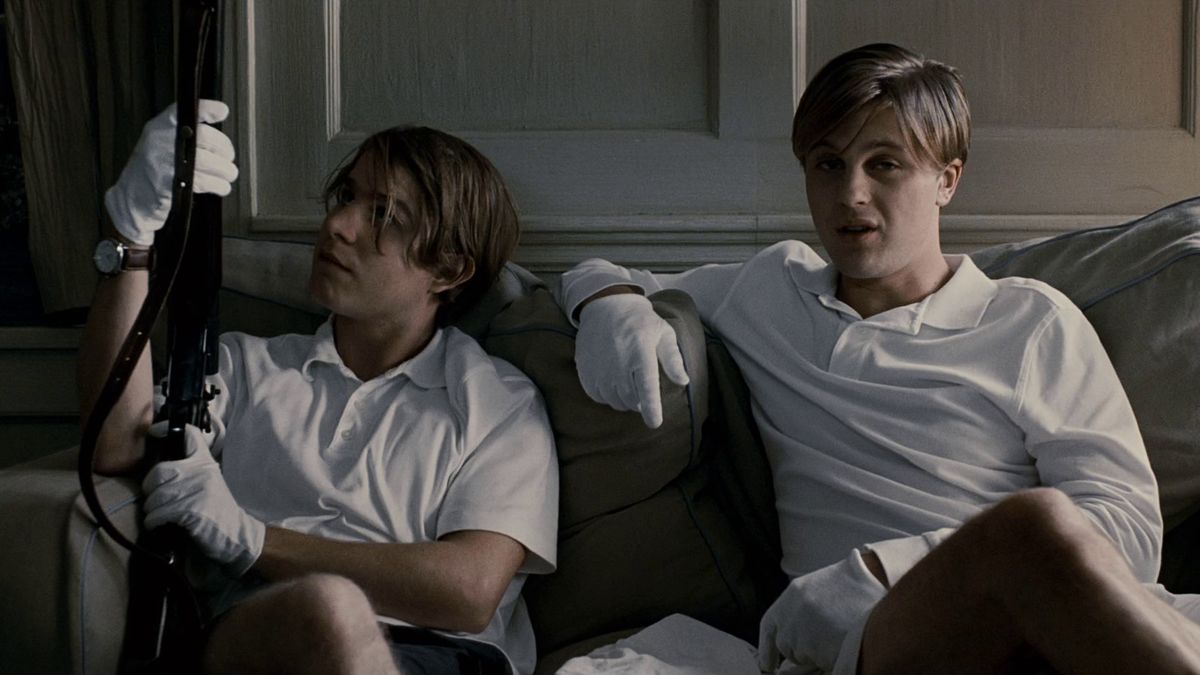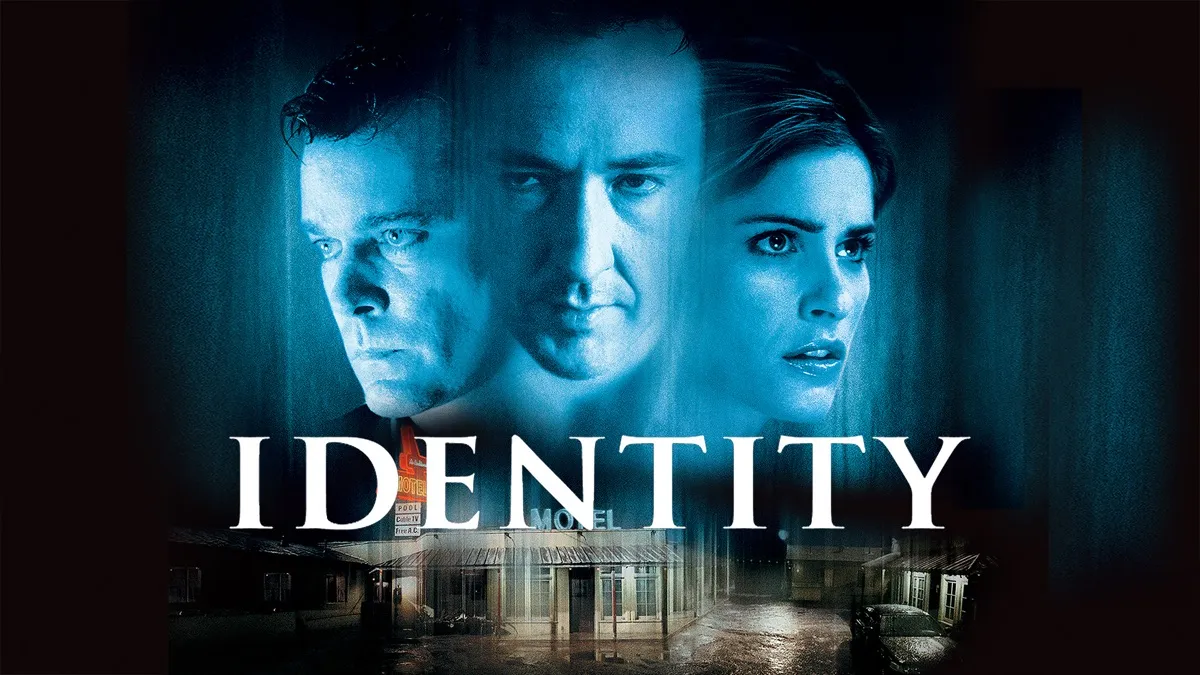Few films are as deliberately uncomfortable, confrontational, and coldly brilliant as Michael Haneke’s Funny Games (2008). A shot-for-shot English-language remake of his own 1997 Austrian film, this version stars Naomi Watts, Tim Roth, and Michael Pitt, and remains one of the most subversive entries in the psychological horror genre.
Funny Games is not a horror film in the traditional sense. It doesn’t rely on gore, monsters, or supernatural forces. Instead, it turns the camera on the audience and dares you to keep watching — even when everything inside you tells you to look away.
The plot is deceptively simple. A well-off family — George (Roth), Ann (Watts), and their young son Georgie — arrive at their lakeside vacation home for a quiet retreat. Shortly after settling in, they are approached by two polite, well-dressed young men: Paul (Michael Pitt) and Peter (Brady Corbet).
What begins as an awkward visit escalates into something horrifying when the men suddenly become violent, imprisoning the family and subjecting them to a series of psychological and physical “games.” Their twisted goal? To see if the family will be alive by morning.
But Funny Games isn’t about whether the family survives. It’s about why we’re watching at all.
One of the most disturbing and unique aspects of Funny Games is how self-aware it is. Paul, the more talkative and sadistic of the two intruders, frequently breaks the fourth wall, looking directly into the camera and addressing the audience. He asks us questions. He smirks at our reactions. He treats the unfolding violence as entertainment — because, in a way, that’s exactly what it is.
This technique isn’t just a gimmick — it’s the core of Haneke’s philosophy. The film critiques the very audience that consumes violent media for entertainment. As Paul puts it in one of his chilling asides: “You want a real ending, right?” In one unforgettable moment, when Ann seemingly turns the tables, grabbing a shotgun and killing Peter, Paul grabs a remote control… and literally rewinds the movie, erasing the victory. The message is clear: you don’t get catharsis here.
Unlike many horror films, Funny Games is brutally minimalist. There is no background music — no score to guide emotions, no musical cues to warn you of danger. The violence happens in silence, often offscreen, leaving your imagination to fill in the horror. This creates a chilling realism that is far more disturbing than blood and guts.
Haneke uses long takes, static shots, and mundane settings to strip away the safety net. The film doesn’t build tension through cinematic tricks. It builds it through impending doom, inevitability, and the feeling of helplessness — much like the characters themselves.
At its heart, Funny Games is a critique of media violence and our passive consumption of it. It asks hard questions: Why do we enjoy watching people suffer on screen? What do we expect from horror films — and why? Are we complicit in the violence by continuing to watch?

Unlike slasher films that “punish” characters for promiscuity or arrogance, Funny Games punishes its characters — and its audience — for doing nothing wrong at all. George and Ann are kind, loving, and innocent. Their suffering isn’t poetic or justified. It’s senseless — and that’s the point.
The killers are not given complex backstories or psychological motivations. They are empty vessels — reflections of an audience that hungers for cruelty without consequence.
Naomi Watts delivers a heart-wrenching performance as Ann, portraying a descent from calm to desperate survival with haunting realism. Tim Roth is equally effective as the emotionally and physically broken George. But it is Michael Pitt who steals the screen — his portrayal of Paul is terrifying precisely because it’s so detached. He’s articulate, polite, and eerily calm, even while committing unspeakable acts.

Their chemistry — or lack thereof — fuels the film’s uncomfortable tone. There is no pleasure, no panic, just a slow-motion collapse of everything good and safe. When it was released, Funny Games polarized audiences. Some praised its brutal honesty and postmodern message; others found it manipulative or unnecessarily cruel. But love it or hate it, no one could deny its impact.
It remains a film studied in film schools and debated in horror circles. Not because of what it shows, but because of what it refuses to give: closure, satisfaction, redemption. Haneke didn’t remake his film to reach a wider audience — he remade it to confront a wider audience. And the film’s endurance proves that he succeeded.





